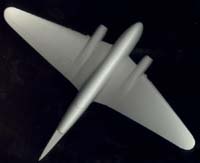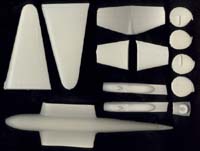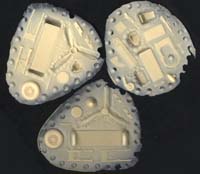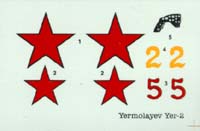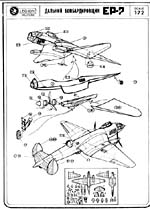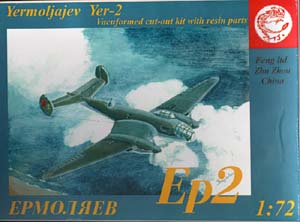Legion 1/72 Vacform/Resin Ermolaev ER-2 | | Largely unknown outside of Russia, the Ermolaev Er-2 enjoyed a long and complicated development history, and enjoyed an enviable service record. Despite the modest numbers of machines produced, the Er-2 employed a host of engine types, while the fuselage design remained largely unchanged right through the War. In 1936 Italian-born engineer Roberto Bartini created a civil transport prototype known as the STAL-7. This machine dazzled the 1936 Paris Air Show, and went on to win over 30 long distance and payload flight records. The machine was an obvious candidate for development as a long range bomber, and plans were laid for this type of work under Bartini's Design Group. However, in 1939 Bartini was arrested by the NKVD, and was replaced by one of his brilliant young engineers, Vladimir Ermolaev. The DB-240 (da'niy bombardirovchik, or long-range bomber) prototype featured an all-metal construction with dural skinning. The cranked gull wings were indicative of a fashion amongst European designers of the mid-1930's, but did provide for low drag and excellent visibility on take-off. The cockpit was placed well to port, giving an odd appearance. Power was provided by two M-105 engines mounted in very streamlined cowlings; the more powerful M-106 had been planned but was not yet available. The fight and handling characteristics of the DB-240 were outstanding, and unchanged from the STAL-7. Performance, however, was modest on the two M-105s, and though production began at Factory 18 in this form, the search for new engines continued. At the end of 1941 a small batch of Er-2s were manufactured with two AM-37 engines, and this arrangement gave improved performance but slightly reduced range. Production came to a halt in 1942 after the evacuation of Factory 18 to Voronezh. Those Er-2s that did soldier on in service were typically re-engined with successive versions of the M-105, usually the -PA and -PF, respectively, which improved performance over the original configuration. In 1944 production of the Er-2 resumed again, this type mounting two ACh-30B diesel engines in revised cowlings. This new variant has a redesigned cockpit and a larger wing, as well as other detail changes and cannon armament. The diesel powered Er-2 had an ever greater range than its predecessors, 3400 miles being common in most Wartime configurations. The Er-2 was popular in service with its crews, and participated in many heroic encounters. Er-2s played a key role in the Defense of Moscow, took part in the bombing of Berlin, and conducted very long duration patrols over the Baltic coastline, almost always without escort. Examples of both major versions were still in service in 1945 with several Regiments, and production of the type continued after the War with the Er-2ON transport. The Kit A new kit from Legion - or at least I think that is the company name, there are others on the box as well – is this vacform and resin release of the Soviet ER-2. The kit contains precut vacform airframe components and resin details. There is also a sheet of vacformed canopies. Starting with the largest piece – the upper fuselage and wings. The detail on this is very well done with finely recessed panel lines and rivets along the nacelle/outer wing join. The fuselage is designed in such a way that the nose will need to be removed to allow the canopy to be applied, the same goes for the upper gun position. The piece is precut from the vacform sheet, but will require reduction of the edges to allow a clean join. One other area that requires work is that there are tiny nubs over the entire piece from the molding process. These are best removed with a new X-Acto blade. Locations for the various clear glazing are etched in place, allowing one to either paint them as is, or remove them and use the clear parts provided. The next largest piece is the lower fuselage and wing root. The same applies to this piece as the previously described one. The remainder of the vacform parts are the lower outter wing panels, tail surfaces and nacelles. There is also a clear sheet with 10 canopies and windows molded in place. The resin parts are on three wafers, two of which contain similar parts. These two are for detailing the engine nacelles, and contain tyres, propellor, propellor hub, undercarriage struts and interior of the wheel well. The third wafer is of the interior details and consists of three seats, floors, control panels, control column, rudder bar, interior frames and radio dome. Decals are provided for two aircraft, neither of which has any references given. Instructions are limited to a single sheet showing an exploded view of the kit. No interior locations are provided, so some preplanning will be necessary here. Conclusion The parts for this kit are well cast/molded, test fitting of the two fuselage halves would seem to indicate that they will join together nicely. The lack of interior placement and nubs are a slight negative, but on the whole this should be a most intriguing kit for anyone interested in VVS aircraft. My thanks to Lubos Vinar of VAMP Mail Order for the review sample. | 


 



  
    |
